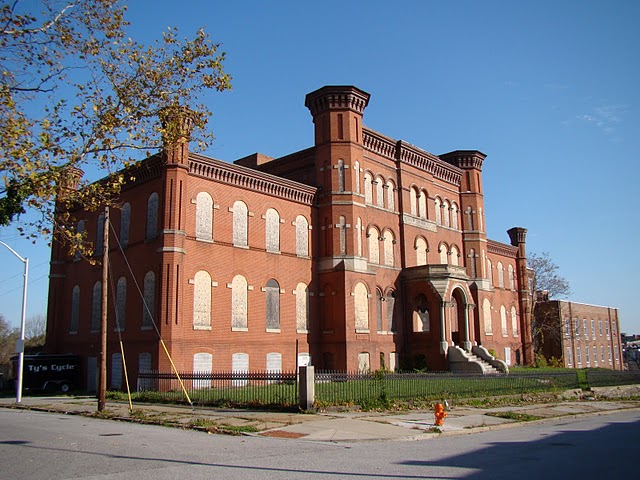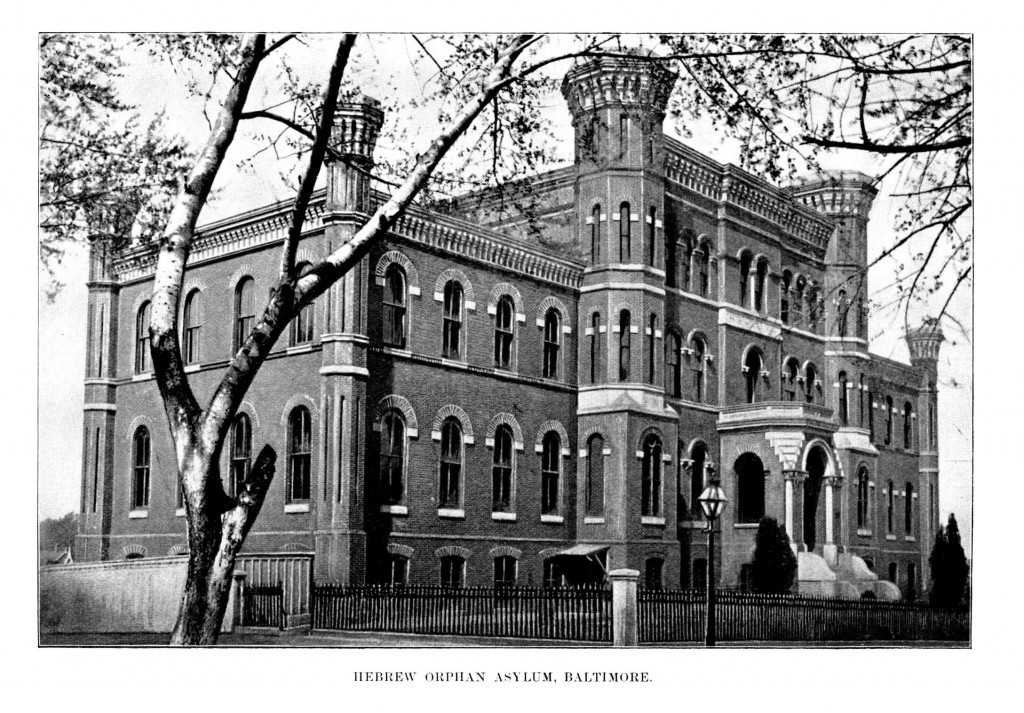
When the recent Urbanite article on the Hebrew Orphan Asylum asked the question, “Can National Register status save Baltimore’s coolest abandoned building?” we must respond, “Yes but not alone.” Preserving the Hebrew Orphan Asylum, better known to West Baltimore residents as the former Lutheran Hospital of Maryland, depends on the continued success of partnerships between Baltimore Heritage, Coppin State University, the Coppin Heights Community Development Corporation, the National Trust for Historic Preservation, and stakeholders throughout Baltimore and the nation. The Hebrew Orphan Asylum building is important, not only for its significance as the oldest Jewish orphanage building in the United States, but also to the neighborhoods of Greater Rosemont with its great potential to anchor transit-oriented development around the future Rosemont Red Line station. We are working in partnership to bring this historic 1876 building into the future, as a renewed asset to historic West Baltimore.
Baltimore Heritage added the building to our Watchlist in 2004 and began our partnership with the Coppin Heights CDC in October 2009, with a commitment by Baltimore Heritage to prepare a National Register nomination for the property. Our research on the site uncovered nearly 200 years of development from its beginning in 1815 as “Calverton,” the country home of Baltimore banker Dennis Smith, to its vital role providing social and medical services for local residents, first as the Baltimore City and County Almshouse (1820-1866), then as the Hebrew Orphan Asylum (1872-1923), the West Baltimore General Hospital (1923-1945), and finally as the Lutheran Hospital of Maryland (1945-1989). Built in 1876 by the short-lived Baltimore architectural partnership of Lupus & Roby, the current red brick Richardsonian Romanesque building has unfortunately remained vacant since 1989 but, despite its deteriorated condition, retains its unique character and a substantial presence in the Mosher neighborhood of Greater Rosemont.
Baltimore Heritage thoroughly documented this rich history in a National Register nomination form (available here as a PDF) submitted to the Maryland Historical Trust this past February and reviewed by the Commission for Historical and Architectural Preservation on April 13. The nomination will continue on for review by the National Park Service National Register of Historic Places and we anticipate that the building will be listed on the National Register before the end of the year. While designation may make the building eligible for a range of grants and incentives, such as the HBCU historic building grants awarded last fall through the American Recovery and Reinvestment Act, designation alone is not sufficient to preserve and restore the former Hebrew Orphan Asylum.
Fortunately, designation is only the first step for Coppin State University and Baltimore Heritage in their continued partnership to preserve and rehabilitate this rare landmark. The commitment by Coppin State University President Dr. Reginald S. Avery to preserve this building has been commended and supported by the Jewish Museum of Maryland, the American Jewish Historical Society, members of the Hebrew National Orphan Home Alumni Association, and Preservation Maryland. Regional and local recognition of the incredible significance of this building helps to launch an ongoing process of identifying appropriate uses, securing funding, and planning the stabilization and rehabilitation of the endangered building. While we are excited to share the good news of the anticipated designation of the Hebrew Orphan Asylum, we are also glad to report that we are hard at work to preserve the building in partnership and we are not done yet.


Dear Eli,
I went on your tour of the McCullough St area of West Baltimore on Saturday, May 15. During that tour we paused by a little triangular park near a Catholic church. Opposite that park was a mural, a terrific woodland vision. Sorry I can’t be more specific.
Can you please identify for me the location of that mural? and also, what you or Baltimore Heritage might know about more examples of Baltimore murals?
Thanks,
M. Edgar
Hello Mary,
You can find more information, including a map of murals citywide, on the website of the Baltimore Office of Promotion & the Arts. The mural at Presstman Street and Pennsylvania Avenue, across from St. Peter Claver is titled and was created by artist Lyle Kissack in 2007. The mural does really stand out on Pennsylvania Avenue!
Best,
Eli